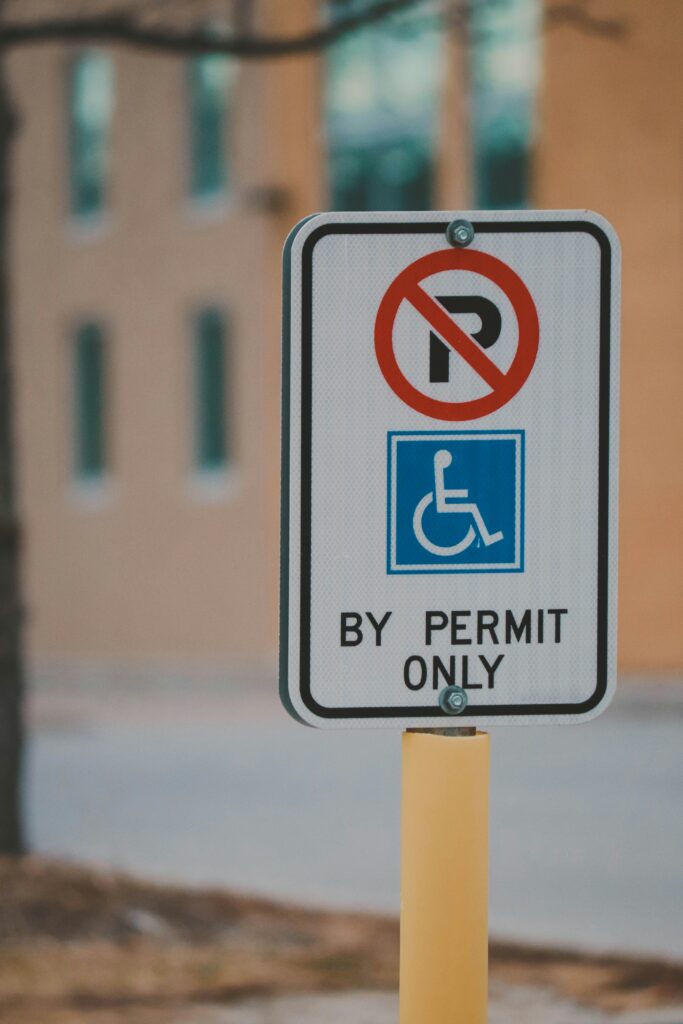Have you ever wondered how Obamacare provides coverage for disabilities? In this article, we will explore the various aspects of Obamacare coverage for disabilities, including the key provisions, eligibility criteria, and the benefits it offers. Whether you or someone you know is living with a disability, understanding the options available under Obamacare can help ensure access to essential healthcare services and support. So, let’s dive into the world of Obamacare coverage for disabilities and gain a better understanding of the opportunities it brings.
Table of Contents
ToggleBasics of Obamacare
Definition of Obamacare
Obamacare, officially known as the Affordable Care Act (ACA), is a comprehensive healthcare reform law that was enacted in 2010. It aims to improve access to quality healthcare, provide essential health benefits, and expand coverage options for individuals and families in the United States.
Purpose of Obamacare
The main purpose of Obamacare is to ensure that every American has access to affordable and comprehensive health insurance coverage. It aims to eliminate discriminatory practices by insurance companies, such as denying coverage or charging higher premiums based on pre-existing conditions. Additionally, it aims to make healthcare more affordable by expanding Medicaid and providing financial assistance to individuals and families who qualify.
Key provisions of Obamacare
Obamacare includes several key provisions that are designed to improve healthcare coverage and protect consumers. Some of these provisions include:
-
Individual mandate: This requires most individuals to have health insurance or pay a penalty. It ensures that healthy individuals participate in the insurance pool to balance the costs of covering those with pre-existing conditions.
-
Preventive care coverage: Obamacare mandates that insurance plans cover certain preventive services, such as vaccinations and screenings, without charging out-of-pocket costs.
-
Prohibition on lifetime limits: Insurance plans are prohibited from imposing lifetime limits on essential health benefits, ensuring that individuals with chronic conditions or disabilities can receive the necessary care without financial limitations.
-
Dependent coverage up to age 26: Under Obamacare, young adults can stay on their parents’ insurance plans until the age of 26, providing them with continued coverage during transitional periods in their lives.
-
Marketplace insurance plans: The creation of state-based insurance marketplaces, also known as exchanges, allows individuals and small businesses to compare and purchase health insurance plans. These plans must meet certain standards and provide essential health benefits.
Coverage for Disabilities
Introduction to disability coverage
Obamacare includes provisions that aim to improve healthcare coverage for individuals with disabilities. These provisions ensure that individuals with disabilities have access to affordable and comprehensive health insurance plans, regardless of their pre-existing condition.
Eligibility criteria for disability coverage
To be eligible for disability coverage under Obamacare, individuals must have a disability that meets the definition provided by the Social Security Administration (SSA). The SSA considers an individual disabled if they have a physical or mental impairment that prevents them from engaging in substantial gainful activity and is expected to last for at least 12 months or result in death.
Types of disabilities covered
Obamacare does not specifically list the types of disabilities that are covered, but rather focuses on providing equal access to healthcare for individuals with disabilities. This means that individuals with any type of disability, whether physical or mental, are eligible for coverage under the law.
Pre-existing conditions and disability coverage
One of the key provisions of Obamacare is the prohibition on insurance companies denying coverage or charging higher premiums based on pre-existing conditions. This ensures that individuals with disabilities cannot be denied coverage or face higher costs solely because of their disability. This protection is vital for individuals with disabilities who may have higher healthcare needs and costs.

Essential Health Benefits
Overview of essential health benefits
Essential health benefits are a set of 10 categories of services that all insurance plans must cover under Obamacare. These categories include:
- Ambulatory patient services: Including outpatient care and doctor visits.
- Emergency services: Providing coverage for emergency room visits and urgent care.
- Hospitalization: Coverage for inpatient hospital stays.
- Maternity and newborn care: Including prenatal care and childbirth.
- Mental health and substance abuse disorder services: Ensuring coverage for mental health treatment and addiction services.
- Prescription drugs: Providing access to necessary medications.
- Rehabilitative and habilitative services and devices: Covering therapies and devices to help individuals recover or maintain function.
- Laboratory services: Including diagnostic tests and screenings.
- Preventive and wellness services and chronic disease management: Ensuring coverage for preventive care and management of chronic conditions.
- Pediatric services, including oral and vision care: Covering children’s healthcare needs, including dental and vision care.
Relevance of essential health benefits to disabilities
The essential health benefits required by Obamacare are particularly relevant for individuals with disabilities. Many disabilities require ongoing care, rehabilitation services, and specialized treatments, which are covered under these categories. With essential health benefits, individuals with disabilities can access the care they need without facing excessive out-of-pocket costs or limitations.
Examples of essential health benefits for disabilities
For individuals with disabilities, essential health benefits can make a significant difference in accessing necessary care. For example, rehabilitative and habilitative services can include physical therapy, occupational therapy, and speech therapy, which are often essential for individuals with mobility or communication impairments. Mental health and substance abuse disorder services can provide crucial support for individuals with mental health conditions or substance abuse issues. Additionally, pediatric services such as oral and vision care can ensure that children with disabilities receive the appropriate healthcare interventions.
Medicaid Expansion
Explanation of Medicaid expansion
Medicaid is a joint federal and state program that provides free or low-cost healthcare coverage to eligible individuals and families with limited income. Medicaid expansion, a provision of Obamacare, aimed to expand Medicaid eligibility to include more low-income individuals, including those with disabilities. However, the expansion was not universally adopted by all states, leading to variations in coverage across the country.
Impact of Medicaid expansion on disability coverage
Medicaid expansion has had a significant impact on disability coverage, particularly for individuals with low income and disabilities. In states that expanded Medicaid, more individuals with disabilities became eligible for Medicaid, providing them with comprehensive healthcare coverage. This expansion has helped bridge the gap for individuals who may not qualify for Social Security disability benefits but still require healthcare support.
Criteria for Medicaid eligibility for people with disabilities
Medicaid eligibility criteria for people with disabilities vary by state. However, individuals with disabilities generally qualify for Medicaid based on their income and disability status. Income eligibility limits are often higher for individuals with disabilities, taking into account the potential financial burdens they face due to their disability-related expenses. Furthermore, individuals with disabilities who receive Supplemental Security Income (SSI) are automatically eligible for Medicaid in most states.

Marketplace Insurance Plans
Accessibility of marketplace insurance plans for people with disabilities
Marketplace insurance plans created under Obamacare are designed to be accessible to all individuals, including those with disabilities. These plans are required to offer a range of essential health benefits and cannot deny coverage or charge higher premiums based on pre-existing conditions. Additionally, the marketplaces provide online tools and resources to assist individuals with disabilities in comparing and selecting the most suitable insurance options.
Comparison of marketplace insurance plans for disability coverage
When comparing marketplace insurance plans for disability coverage, it is important to consider factors such as premiums, deductibles, co-payments, and coverage limits. Individuals with disabilities should also carefully review the plans’ networks of healthcare providers to ensure that their current healthcare providers are included. Furthermore, evaluating the coverage and accessibility of essential health benefits relevant to their specific disabilities is crucial.
Enrollment process for marketplace insurance plans for people with disabilities
Enrolling in a marketplace insurance plan is a straightforward process, and individuals with disabilities can apply online through their state’s marketplace website. The websites are designed to be accessible to individuals with disabilities and provide support options, such as telephone assistance and in-person enrollment assistance centers. Additionally, individuals can also seek assistance from certified marketplace navigators or insurance brokers who specialize in helping individuals with disabilities navigate the enrollment process and choose the right plan for their needs.
Protections and Rights
Nondiscrimination provisions for people with disabilities
Obamacare includes important nondiscrimination provisions that protect individuals with disabilities from being denied coverage or facing unfair treatment by insurance companies. These provisions prohibit insurance companies from charging higher premiums or denying coverage based on pre-existing conditions, including disabilities. These protections ensure that individuals with disabilities have equal access to affordable and comprehensive healthcare coverage.
Rights and protections under the Americans with Disabilities Act (ADA)
In addition to the protections provided by Obamacare, individuals with disabilities are also entitled to rights and protections under the Americans with Disabilities Act (ADA). The ADA prohibits discrimination against individuals with disabilities in various areas, including healthcare settings. This means that healthcare facilities and providers must provide equal access to services, reasonable accommodations, and effective communication for individuals with disabilities.
Reasonable accommodations for people with disabilities
Under the ADA, healthcare facilities and providers are required to provide reasonable accommodations to individuals with disabilities to ensure equal access to healthcare services. Reasonable accommodations may include providing accessible exam tables, offering alternative communication methods for individuals with communication disabilities, or allowing support animals in healthcare settings. These accommodations are essential to ensuring that individuals with disabilities can fully participate in their healthcare and receive the care they need.

Affordability and Financial Assistance
Affordability options for people with disabilities
Obamacare offers affordability options for individuals with disabilities to ensure that they can access healthcare services without facing excessive financial burdens. Marketplace insurance plans provide financial assistance, such as premium tax credits and subsidies, to reduce the cost of insurance premiums. Additionally, individuals with disabilities may also qualify for cost-sharing reductions, which lower the out-of-pocket costs for services such as deductibles, co-payments, and co-insurance.
Premium tax credits and subsidies
Premium tax credits are available to individuals with disabilities who purchase insurance through the marketplace and meet certain income requirements. These credits are designed to lower the cost of monthly insurance premiums. Subsidies, also known as cost-sharing reductions, further help reduce out-of-pocket costs for individuals with disabilities who have lower incomes. These financial assistance options help make healthcare coverage more affordable and accessible for individuals with disabilities.
Cost-sharing reductions for people with disabilities
Cost-sharing reductions specifically target lowering the out-of-pocket costs for individuals with disabilities who have lower incomes. These reductions can significantly reduce deductibles, co-payments, and co-insurance for essential health services, making them more affordable and accessible. By reducing these costs, individuals with disabilities can receive the necessary care without facing financial barriers.
Effective Communication and Accessibility
Accessible healthcare facilities and services
Obamacare and the ADA place an emphasis on ensuring that healthcare facilities and services are accessible to individuals with disabilities. This includes having physical accessibility features such as ramps, wide doorways, accessible parking spaces, and accessible restroom facilities. Additionally, healthcare facilities are also encouraged to implement policies and procedures that promote effective communication, such as providing sign language interpreters or offering alternative communication methods for individuals with communication disabilities.
Communication options for people with disabilities
To ensure effective communication, individuals with disabilities have the right to request communication accommodations that meet their specific needs. This can include providing sign language interpreters, written materials in accessible formats, or assistive technology devices to facilitate communication. By offering diverse communication options, healthcare providers can ensure that individuals with disabilities receive equal access to healthcare information and can actively participate in their care.
Technology advancements for accessibility in healthcare
Advancements in technology have greatly improved accessibility in healthcare for individuals with disabilities. Electronic health records (EHRs) and telemedicine services provide opportunities for individuals to access and manage their healthcare information remotely. Additionally, assistive technologies such as screen readers, voice recognition software, and mobility aids further enhance accessibility for individuals with visual, hearing, mobility, or communication impairments. These technological advancements play a significant role in ensuring equitable access to healthcare for individuals with disabilities.
Advocacy and Support Organizations
Prominent advocacy organizations for people with disabilities
There are various advocacy organizations dedicated to promoting the rights and interests of individuals with disabilities. Some prominent organizations include the American Association of People with Disabilities (AAPD), Disability Rights Education & Defense Fund (DREDF), National Council on Disability (NCD), and Autistic Self Advocacy Network (ASAN). These organizations work towards raising awareness, advocating for policy changes, and supporting individuals with disabilities.
Roles and services provided by advocacy organizations
Advocacy organizations play a crucial role in supporting individuals with disabilities. They provide resources, information, and guidance on navigating the healthcare system, understanding disability rights, and accessing appropriate healthcare coverage. These organizations also advocate for policy changes to improve healthcare access and fight against discriminatory practices. Many advocacy organizations offer support services such as legal assistance, peer support networks, and educational programs to empower individuals with disabilities and ensure they receive the healthcare support they need.
How to access support from these organizations
Individuals with disabilities can access support from advocacy organizations by reaching out to them directly. These organizations often have helplines, online resources, and local chapters that individuals can engage with. By connecting with advocacy organizations, individuals with disabilities can gain valuable support, information, and access to a network of individuals who understand their unique challenges and can offer guidance.
Additional Resources
Government websites and resources
The government provides various websites and resources to help individuals with disabilities understand and navigate Obamacare coverage. The official ACA website, healthcare.gov, offers information on insurance options, enrollment processes, and financial assistance. Additionally, the Centers for Medicare & Medicaid Services (CMS) website provides details on Medicaid eligibility criteria, coverage options, and state-specific Medicaid programs.
Non-profit organizations offering assistance
Numerous non-profit organizations exist to offer assistance and support to individuals with disabilities. These organizations provide educational materials, counseling services, and guidance on understanding and accessing Obamacare coverage for disabilities. Some well-known non-profit organizations include the National Disability Rights Network (NDRN), Disability Rights Advocates (DRA), and the Christopher & Dana Reeve Foundation.
Educational materials and tools for understanding Obamacare coverage for disabilities
Educational materials and tools are available to help individuals with disabilities better understand Obamacare coverage. These resources provide explanations of key provisions, eligibility criteria, and steps for enrollment. They also offer tips on comparing insurance plans, understanding essential health benefits, and accessing financial assistance. Organizations such as the National Disability Navigator Resource Collaborative (NDNRC) and the Kaiser Family Foundation produce informative guides and fact sheets that simplify and clarify the complexities of Obamacare coverage for disabilities.
By understanding the basics of Obamacare and its provisions, individuals with disabilities can make informed decisions about their healthcare coverage options. With the right knowledge and support from advocacy organizations, they can navigate the enrollment process, access essential health benefits, and exercise their rights to ensure they receive the quality and affordable healthcare they deserve.

